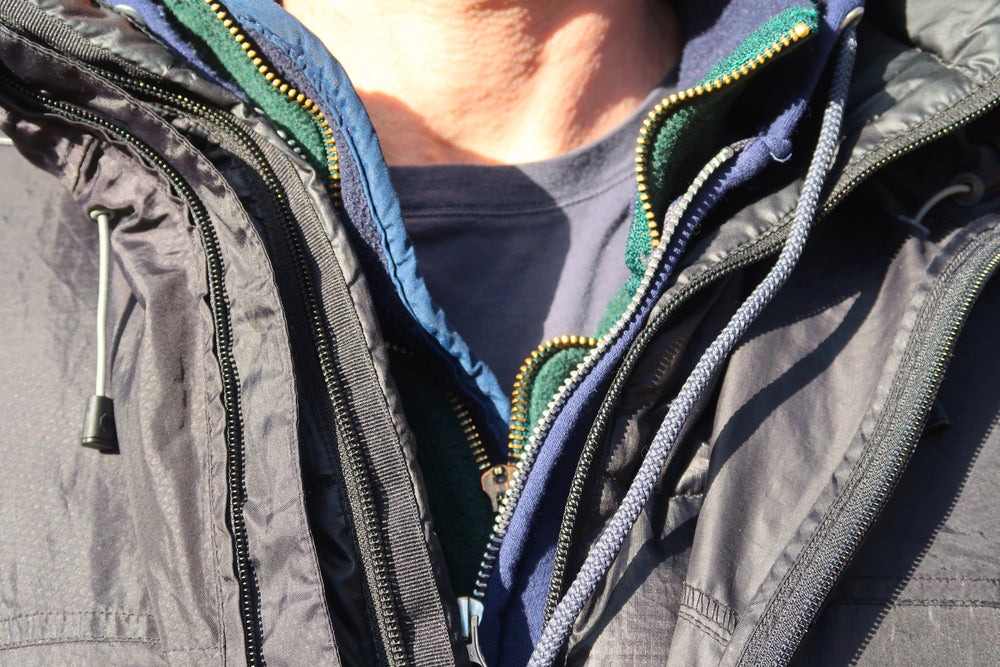Free U.S. Shipping On Orders Over $150

Base Layering Guide for Outdoors and Traveling: Tips and the Best Base Layer Fabrics
Posted on
The rule of thumb when traveling, particularly in cold or unpredictable weather, is to dress in layers. A base layer for wicking sweat off your skin, a mid layer to retain body heat and an outer layer to protect you from rain and wind.
The base layer is, in my opinion, the most important to get right. Get it wrong and you end up clammy with sweat or overheated. The wrong base layer can also irritate your skin, making you itchy and even causing various skin problems. Here’s a quick base layering guide whether you are traveling or going outdoors.
The Importance of the Base Layer
The base layer is arguably the most important of the three layers. It’s not only crucial to your comfort, it’s also important for staying safe in different kinds of weather.
The base layer acts as a second skin, providing some warmth and, importantly, keeping your skin dry. If sweat gets trapped on your skin, it’s not only uncomfortable but can also be a safety hazard since it increases the risk of hypothermia when it’s chilly.
The base layer is also important for sensory comfort. The best base layer clothing is made from a soft material that feels gentle against the skin.
Best Materials for Base Layer
To choose the best materials for base layer clothing, think about what you want your base layer to do. One, to keep you warm and two, to keep you dry. Considering these two requirements, the best base layer fabrics are those that provide some insulation while also wicking away sweat.
Let’s see how three popular fabrics perform as base layers.
Cotton
Cotton, which is a go-to fabric for travel clothes, is not ideal as a base layer.
Cotton absorbs sweat and retains it. It stays damp and pulls heat away from your body. This is why wearing a cotton base layer can be so dangerous when you are outdoors.
You are better off wearing a cotton item as a mid layer where it won’t come into contact with your skin. It is especially ideal in warmer weather as it can help you stay cool.
Polyester (and Other Synthetic Blends)
Polyester used to be not-so-good as a base layer. It can get too hot and traps sweat against the skin. But manufacturers have made a lot of progress. Now you can find high performance polyester clothing that’s great for base layering.
The best polyester base layers are lightweight and have good ventilation to allow sweat to escape easily. And because polyester dries quickly, you don't have to worry about a damp base layer.
But what is yet to be solved is how to keep polyester clothing from stinking. A polyester base layer quickly takes on your BO and somehow makes it worse. And this odor can be hard to get rid of even after washing. We explained why polyester stinks in a previous post.
In contrast, many campers and backpackers say they can wear a wool base layer for days and it doesn't stink.
You can also avoid the stink by wearing the Hercleon Hercshirt. You can choose between the short sleeve, long sleeve and tank top versions. They all have antimicrobial treatment that kills odor-causing bacteria, so the shirt smells fresh even after multiple wears.
Wool
Merino wool is hands down the best fabric for a base layer. Here’s why.
- Wool provides excellent temperature regulation, keeping you cool when it’s warm and insulating you when it’s chilly.
- Wool wicks away sweat, keeping your skin dry.
- Wool doesn't lose its insulation performance even when wet, making it a safer choice for outdoors.
- Wool clothing is soft and gentle against the skin. It’s also hypoallergenic, so it is unlikely to cause irritation and other skin problems.
- Wool is naturally antibacterial. This makes it healthier for your skin and keeps it smelling fresh for days.
Base Layering Tips
Here are some tips for proper base layering.
- Choose lightweight items. Don't get anything too thick as it can make you overheat. Remember the primary role of the base layer is sweat wicking, not warmth.
- If you are going hiking, skiing, and other outdoor activities in very cold weather, use thermal underwear as your base layer. Unlike regular base layers, thermal underwear’s primary role is warmth.
- If you expect light to moderate sweating, a polyester base layer can work. But if you expect to sweat a lot, go with wool. It does a much better job keeping you cool and dry — and it won’t stink.
- Check that your outfit still works with just the base layer. This ensures you don't feel awkward when it gets warmer and you have to remove your outer layers.
Quick links
Contact
6063 Hudson Road #160
Woodbury, MN 55125
Yo@hercLeon.com
Leave a comment: